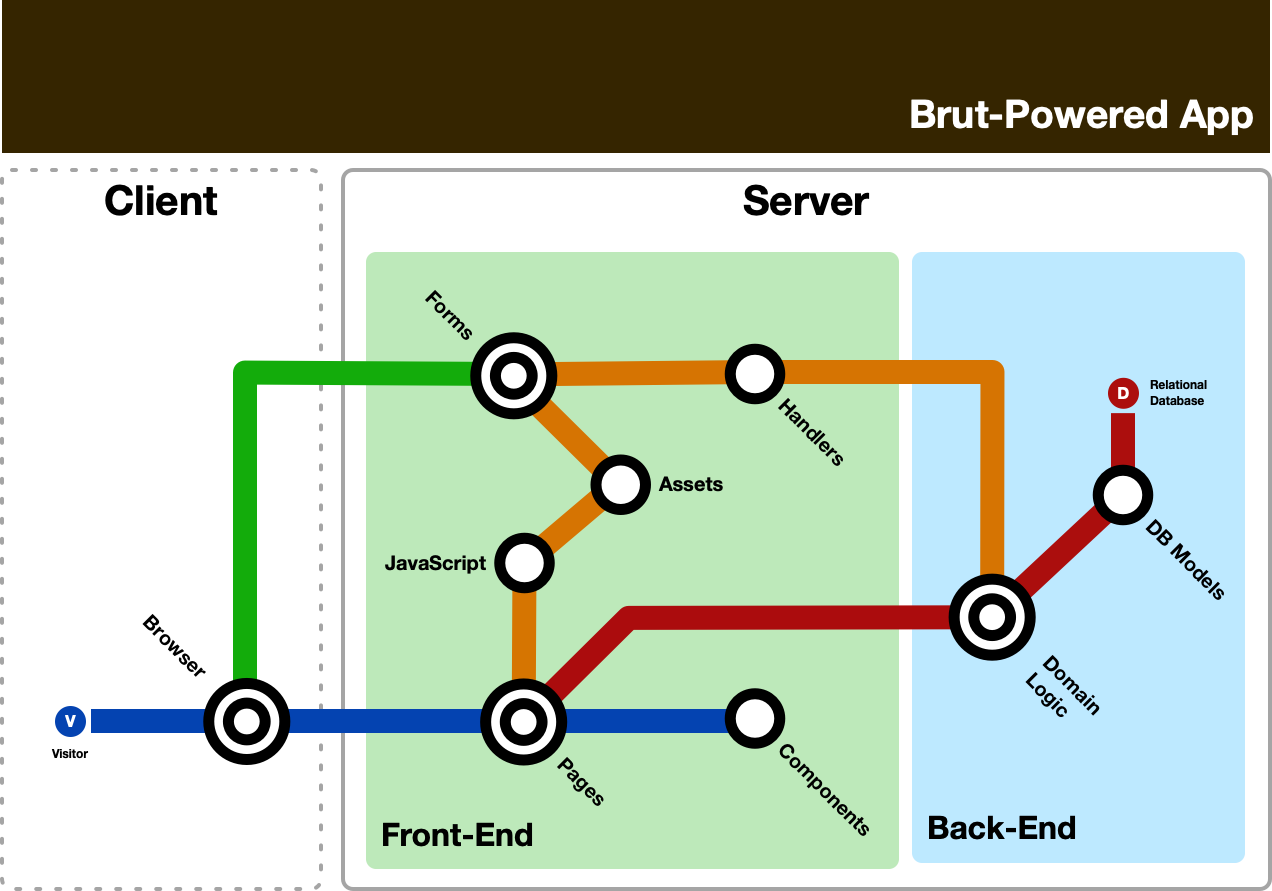Conceptual Overview
Brut is a way to build web apps that generate HTML, have JavaScript and CSS, and interact with a Database. It's built on Ruby standard libraries and community libraries like Sequel and Phlex.
Brut's approach and design are built on three core values:
- Leverage Standards - The web platform is great, and Brut wants you to use it.
- There's One Best Way To Do It - Flexibility leads to chaos.
- Simple over Easy - Verbose code that can be quickly understood beats impenetrable compact DSLs every day.
Brut's abstractions tend to mirror concepts found in the domain of web sites. For example, a browser serves up a web page at a URL. In Brut, that's called a page and you'd create a subclass of Brut::FrontEnd::Page to implement it.
Brut tries to avoid abstractions that simply translate existing standards into a more aestheticly pleasing form. You already need to know CSS, HTML, the Web Platform, and SQL, so there's little to gain by requiring you to learn a different way to use them.
Yes, You Can Build a Blog in 15 Minutes
Check out the source code if you want to dive right in.
Basic Elements
Brut organizes its code and behavior around four basic concepts:
- Client or Client Side is the web browser (or HTTP client). This is where CSS is applied to HTML and where JavaScript is executed. HTTP requests are initiated here.
- Server or Server Side is where any code not in the browser runs. In Brut, this includes HTML generation, SQL queries, and everything in between.
- Front End is the code that deals with producing your user interface or HTTP API. A lot of this code runs on the server side, however it exists to provide a user interface of some sort.
- Back End is the code that deals with everything else, such as accessing a database, executing business logic, or managing background jobs.

- Visitor is someone visiting your web site or app.
- Browser is, well, a web browser
- Pages generate web pages, which is what happens when a browser's UI navigates to a URL.
- Forms are submitted by the browser to the server. In Brut, a form describes the contents of a
<form>as well as provides access to the submitted data. - Handlers receive non-GET HTTP requests from the browser, notably form submissions.
- Components generate HTML fragments and are used to generate the HTML of a page or for re-use across pages.
- JavaScript and Assets (including CSS) are bundled on the server and sent to the client.
- Domain Logic as where your business and domain logic lives and can be implemented however you like.
- DB Models are objects that provide access to your database.
- Relational Database is your database, where data is stored.
Brut doesn't prevent the addition of more pieces of infrastructure or code. You can add a Redis cache, a Sidekiq job backend, or integrate with third party APIs.
Brut is Not MVC
Brut is not an MVC framework, nor does it use the concept of resources as an abstraction. Although HTTP does include this concept, we find it's not as useful for managing web apps as it may seem.
We've found that teams often struggle with mapping what everyone else calls pages to resources and HTTP verbs. We also find that the consonance of features, resources, actions, and database tables never materializes. We're basically not going to debate what the meaning of the DELETE verb on the widgets resource is actually supposed to mean.
Brut is Hippocratic Licensed
It's important to me that Brut is used to make the world a better place. Please take a note of its license